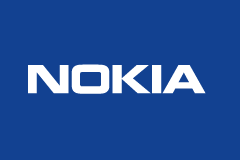While there’s a lot of excitement about the eventual applications for 5G mobile networks which include remote surgery and rich video interactions with virtual reality, the actual reality is that early applications of the technology will be much more familiar both to operators and their customers.
This is a sensible approach because there is so much to learn with 5G that first utilising it for well-known and understood services makes sense.
That’s not to say that differences won’t be substantial and clear to see. It is expected that 5G will start with extended mobile broadband capabilities. These will provide users with a better experience and be able to handle larger video such as 4k. This is a safe choice enabled by 5G’s capability to provide faster data delivered at a lower cost per bit.
This isn’t the full promise of 5G and certainly not the reason to deploy the technology. However, it presents a clear improvement over 4G and provides mobile operators with a business model for early deployment. Things get much more exciting later as the 5G revolution enables totally new revenue generating services. These new revenues will come from 5G’s capability to address extreme requirements for low latency, high reliability and the need to connect vast volume of Internet of Things endpoints and sensors with optimal efficiency. The cost must be minimised to make sense of the business case for tens of thousands of devices that enable low margin services.
These today are not the reality and are at the vision stage in which business models are being developed and technology choices are unclear. Mobile operators therefore are working with companies like Nokia that can help them envision the new market place and develop 5G their networks and offerings from design to deployment.
Advances are being made rapidly and the Winter Olympics in 2018 in South Korea is being seen as a proving ground for some 5G services and technologies. There is interest in fixed wireless access over 5G and a tier one operator in the APAC region is working with Nokia Services to examime in-vehicle entertainment applications and hotspot coverage at event venues using 5G. In Europe a Tier 1 operator, also working with Nokia Services, is looking into options for introducing extreme mobile broadband in dense urban areas with 5G overlay to meet the demand of the mobile mass market.
These deployments, although focused on traditional yet enhanced mobile network services, will set the scene and provide the foundation for the introduction of new services and capabilities that will transform the position of mobile operators in the wider digital value chain as new opportunities crystallise and mature. Nokia 5G Acceleration Services are focused to address the 5G challenge to help CSPs define their tailored journeys to 5G.
Learn more by watching our recent webinar with VanillaPlus and Analysys Mason and at http://www.diveinto5g.com/
with VanillaPlus and Analysys Mason and at http://www.diveinto5g.com/
This blog was written by Helmut Schober, who leads the 5G Services programme at Nokia, and Vikas Dhingra, a consultant at Bell Labs Consulting, now part of Nokia.






